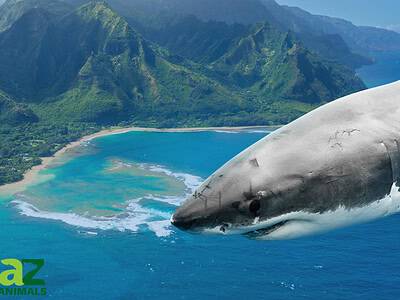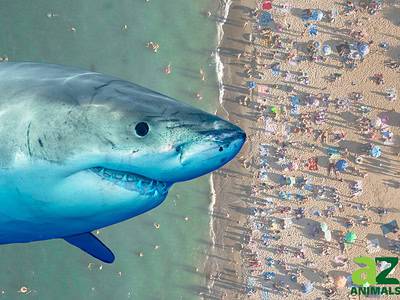Mollusk
Most molluscs have more than one heart
Advertisement
Mollusk Scientific Classification
Mollusk Facts
- Prey
- Crustaceans, fish, bivalves, and jellyfish
- Group Behavior
- Solitary
- Fun Fact
- Most molluscs have more than one heart
- Biggest Threat
- Human activities
- Most Distinctive Feature
- Most mollusks have a mantle
- Distinctive Feature
- Many classes of molluscs have calcerous shells
- Habitat
- Terrestial and aquatic habitats worldwide
- Predators
- Wider range of animals, including fish, birds, larger molluscs, and humans
- Diet
- Herbivore
- Lifestyle
- Nocturnal
- Number Of Species
- 85000
View all of the Mollusk images!
Most molluscs have more than one heart
Summary
Mollusks are soft-bodied invertebrates in the phylum Mollusca. Members of this group are characterized by a soft body wholly or partially covered in a hard carbonate shell. The Mollusca phylum is one of the largest and most diverse groups of organisms in the world (second only to the arthropods). Gastropods are the most numerous mollusks, while the giant squid and colossal squid are the biggest. Mollusks alone make up 23% of all marine species, making it the largest phylum in the marine world. Feeding, reproduction, and preferred habitat vary from one species to the other.
5 Mollusk Facts
- Mollusks are soft-bodied invertebrates characterized by a head and a foot.
- The gastropod class is the largest, with up to 80% of the total classified species in the phylum.
- Mollusks have adapted to life in all habitats except air.
- Some mollusk species, such as snails and clams, have external shells.
- They occur in different beautiful color shades and patterns.
Mollusk — Scientific Classification
Mollusks (also written as molluscs) are soft-bodied organisms that belong to the phylum Mollusca. This is the second largest phylum of organisms on earth. The name Mollusca is of Latin origin and translates as “soft.” The Mollusca phylum is classified under the Lophotrochozoa superphylum.
The Mollusca phylum is one of the most diverse clades of organisms in the animal kingdom. There are at least 100,000 species in this phylum, and they all differ in terms of their body structure and ecology.
The phylum has about seven living classes which include:
- Aplacophora — Worm-like mollusks
- Bivalvia — Class of oysters, clams, mussels, and scallops
- Cephalopoda — Class of octopuses, cuttlefish, nautiluses, squid, and ammonites
- Gastropoda — Class of snails, slugs, limpets, conch, sea hares, and sea butterflies
- Monoplacophora — Molluscs with cap-like shells
- Polyplacophora — Class of chitons
- Scaphopoda — Mollusca with tusk shells
Mollusk — Appearance and Behaviour
As expected of such a large and diverse family of organisms, mollusks are quite anatomically diverse. Appearance varies widely from one class of mollusk to the other. Generally, mollusks are soft-bodied, unsegmented, and bilaterally symmetrical. Many classes have a single, limpet-shaped calcareous shell covering the top of their body. However, a few classes are shell-less. For the shelled varieties, the shape and structure of the shell vary as well.
In all mollusks, the dorsal part of their body wall forms a mantle. This part of their body secretes calcareous shells, plates, or spicules. It also forms a mantle cavity which contains the internal organs of the organism. The cavity opens outwards via the mouth, anus, and genitals. Mollusks also have two main nerve cords on their body to detect vibration and touch. Other body features seen in most mollusks in one form or the other include:
- Radula (absent in the bivalves)
- A broad, muscular foot (modified into arms in the cephalopods)
- Visceral mass (concentration of internal organs)
- A complex excretory kidney-like structure called the metanephridia (absent in Aplacophora)
Most classes of mollusks have at least one shell. Their shells come in a variety of colors, including red, blue, purple, pink, or yellow. They may have spotted or striped designs as well. In bivalves such as oysters and clams, the shell occurs as two halves that close up to protect the animal. Octopuses and squids have no shells at all.
Many bivalves stay attached to rock surfaces. However, some of them have a muscular foot for locomotion. Octopuses, squids, and cuttlefish move by forcing out water from a funnel-like structure on their body.
Mollusk — Size and Behavior
Mollusk species come in different sizes. The smallest known mollusk is a micro mollusk discovered in Borneo, which is only about 0.027 inches. Squids are the largest mollusks, with the giant squid growing to lengths of up to 43 feet, and the colossal squid can be as big as 46 feet with a weight of over 1,100 pounds.
Mollusks are nocturnal animals mostly active at dusk and dawn. Some (like snails) hide away in their shells from predators during the day or when disturbed. Similarly, octopuses stay hidden in very deep parts of the ocean. Since they lack protective shells, some mollusks, like octopuses and squids, have other defensive mechanisms. Many species can camouflage to blend in with their environment. They also distract their predators with an ink-like liquid they produce.
Mollusk — Evolution and History
Fossil evidence dates the origin of mollusks back to the Middle Cambrian, around 500 million years ago. There are controversial theories about how mollusks emerged and why they have become so diverse. One of the reasons for the debate is that it isn’t clear if the ancient fossils found so far were really mollusks or another ancient phylum. Most of the paleontological descriptions of these fossils refer to them as “mollusk-like.”
Gastropods, cephalopods, and bivalves emerged first. Experts think they probably evolved from an ancient clade of organisms known as the Lophotrochozoa. However, their emergence from this root and diversification into modern species is still subject to debate.
Scientists discovered Helcionellid remains in Early Cambrian rocks. The creature was grouped as a mollusk because of its snail-like hard shell and is believed to be the ancestor of shelled mollusks.
Although Fordilla and Pojetaia were classified as early bivalves, the more modern variants emerged around 488 to 443 million years ago (Ordovician Period). Rudists, a group of bivalve mollusks, were abundant during the Cretaceous (about 65 million years ago). But they disappeared after the period’s major extinction event.
Unlike modern octopuses and squids, early cephalopod fossils had external shells and crawled on the seafloor. However, most of them did not make it past the Cretaceous Period.
Mollusk — Habitat
Mollusks are found worldwide and are adapted to all habitats except air. Most species are marine. In fact, 23% of marine organisms are mollusks. Several of them are found in freshwater and terrestrial habitats as well. Generally, terrestrial mollusks prefer cool and moist habitats. However, a few survive in cold and dry regions.
Marine and freshwater species are found on muddy and sandy substrata. Many species are free-swimming, but a few stay attached to rock surfaces. They have a worldwide distribution, but some groups are more common in certain regions of the world. The distribution of many molluscan groups is directly linked to their food source and position in the food chain.
Mollusk — Predators and Threats
Mollusks are an important part of the food chain both as consumers and as food for other animal species in their ecosystem. Feeding habits and niche varies from one class of mollusk to the other.
What Do Mollusks Eat?
The majority of modern mollusks are either herbivores or filter feeders. Some molluscan grazers feed on microscopic algae, while others feed on bigger plants like kelp. Most bivalves are filter feeders. They have structures that allow them to pass water over their gills and filter in suspended food particles. Cephalopods like squids and octopuses are carnivores. They prey actively on crustaceans, fish, bivalves, and jellyfish. Smaller cephalopods make up their diet as well.
What Eats the Mollusks?
Most gastropods (snails and slugs) are eaten by terrestrial predators. Some of their major predators include mice, squirrels, birds, turtles, salamanders, toads, and mammals. Fish, birds, frogs, crayfish, and some mammals eat marine mammals. Bigger fish and other large aquatic animals eat cephalopods and other large mollusks too.
Humans are major threats to mollusks. They have formed a great part of the human diet for several thousand years. Apart from eating them as food, the shells and pearls produced by mollusks serve important ornamental purposes. Bivalves produce valuable pearls used for jewelry and other luxury items. Mollusk shells were also popularly used as commodity money and for social status display in some preindustrial societies.
Reproduction, Babies, and Lifespan
Mollusks reproduce sexually. Depending on the species, fertilization may be external or internal. There are even hermaphrodites, such as snails, with male and female gametes in them. All female mollusks produce eggs. While some have live births, others lay their eggs externally. The eggs may hatch into a smaller replica of their parents or a worm-like larva at first.
The lifespan of mollusks ranges from one to 41 years. Most gastropods live for about a year, with a few exceptions. Many cephalopods complete their life cycle within one to three years, while the average lifespan of bivalves is three years.
Population
The population of mollusks is very abundant. There are about 85,000 living species in this phylum alone. However, the population of many species is currently declining. This is a result of over-exploitation, pollution, and habitat modification. Climate change is also contributing to the decline of the mollusks. Even though many mollusks have a thriving population, the population of some freshwater species is currently under threat.
Related Animals
View all 164 animals that start with MMollusk FAQs (Frequently Asked Questions)
Are mollusks carnivores, herbivores, or omnivores?
The feeding habits of mollusks vary from one group to the other. Most mollusks are herbivores. However, some of them are filter feeders while others such as the cephalopods are predators.
What are the types of mollusks commonly eaten by humans?
Humans eat clams and mussels. Apart from the bivalves, they also eat scallops, snails, whelks, oysters, squid, and even octopuses.
Are mollusks harmful?
Some of them are. Some of them give extremely painful stings and bites. Although all octopuses are venomous, only a few of them are deadly to humans. Snails and slugs can upset the balance in new ecosystems. They are pests that eat and destroy crops too.
Do all mollusks have three hearts?
The heart of a mollusk has three (3) chambers. They consist of two auricles and a ventricle. The ventricles move blood from the aorta into the blood vessels while oxygenated blood flows through the auricles.
Thank you for reading! Have some feedback for us? Contact the AZ Animals editorial team.
Sources
- Britannica / Accessed January 12, 2023
- Britannica / Accessed January 12, 2023
- Wikipedia / Accessed January 12, 2023















